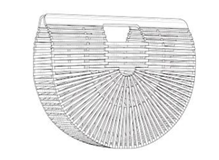The US Court of Appeals for the Federal Circuit ordered a district court to transfer a patent infringement case from Texas to California because the district court had wrongly assessed facts relating to the convenience of witnesses when it originally denied a motion to transfer venue. In re: Apple Inc., Case No. 22-128 (Fed. Cir. Apr. 22, 2022) (Dyk, Reyna, Chen, JJ.) (non-precedential).
CPC Patent Technologies PTY Ltd. filed a lawsuit against Apple in the Western District of Texas, alleging that Apple’s mobile phones, tablets and computing products equipped with Touch ID, Face ID or Apple Card features infringed three of CPC’s patents relating to biometric security. Apple moved to transfer to the Northern District of California, arguing that its employees responsible for the design, development and engineering of the accused functionality resided either in California or outside of the United States, and that the employees most knowledgeable about the marketing, licensing and financial issues relating to the accused products resided in California. Apple explained that no employees with relevant information worked in Western Texas.
The district court denied Apple’s motion. After acknowledging that the action might have been brought in Northern California, the district court analyzed the private and public interest factors governing transfer determinations. The court determined that the factor concerning the convenience of willing witnesses slightly favored transfer. However, the court determined that the factor accounting for the availability of compulsory process weighed strongly against transfer. The district court also determined that court congestion and practical problems factors weighed against transfer based on its ability to quickly reach trial and the fact that CPC had another pending infringement suit in Western Texas. The district court recognized that Apple had identified seven relevant witnesses in California who would have to travel to Texas but found that inconvenience was counterbalanced by the presence of two Apple employees in Austin who CPC insisted had relevant information, and an Apple witness in Florida who would “find it about twice as inconvenient to travel to [Northern California] than to [Western Texas] because Texas sits halfway from Florida to California.” The district court also relied on its ability to compel the third-party Mac Pro manufacturer in Western Texas to attend trial. Finally, the Court noted that there was local interest in the dispute because Apple employs thousands of workers in Western Texas. Balancing these facts, the district court determined that Apple had failed to meet the burden of proving that Northern California was clearly more convenient that Western Texas, and thus denied the motion. Apple petitioned for mandamus review.
The Federal Circuit reversed, finding that Apple had shown clear entitlement to transfer to the Northern District of California. The Court found that the district court erroneously relied on two Apple employees in Austin whom CPC identified as potential witnesses and concluded that it was far from clear that either employee had relevant or material information. One employee had testified that he worked on authentication technology that was different from that accused by CPC, [...]
Continue Reading
read more

 Subscribe
Subscribe



